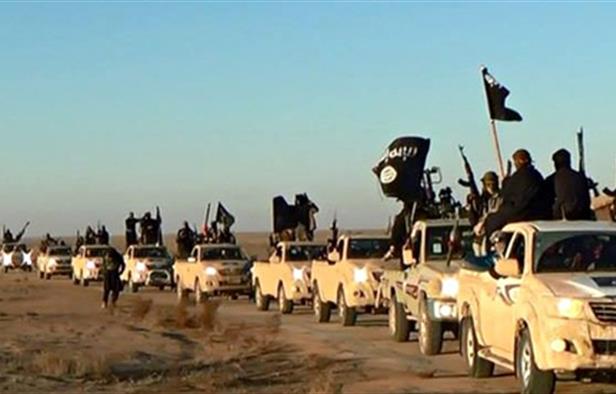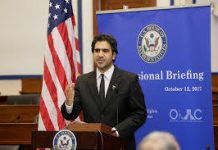ISIS’ capture of Ramadi: Setback or turning point?
Chris Doyle/Al Arabiya
Wednesday, 20 May 2015
Argue all day about ISIS but two thing stands out – the extremist group has majored in the art of how to grab a headline and how to confound its opponents. Front pages of newspapers across the globe as well as social media feeds are easy prey to its telling combination of theatrical violence, threats and mayhem allied to a cyber-media network of ultra-modern sophistication.
But nothing attracts attention like success, not least when powerful adversaries step forward incessantly to proclaim your decline. President Obama, using a different acronym for the group, himself declared on February 11 “ISIL is on the defensive and ISIL is going to lose.” Such sentiments were echoed on May 15 by the General Weidley, the chief-of-staff of Operation Inherent Resolve, when he said: “We believe across Iraq and Syria that Daesh (ISIS) is losing and remains on the defensive.”
Yet ISIS’s capture of Ramadi, the capital of Iraq’s largest province, on May 17 somewhat puts these outbursts of wishful thinking in perspective. Despite losing Tikrit and Kobane, the capture of yet another major urban center demonstrated ISIS’s continued ability to press forward in expanding its’ self-declared Caliphate. One report suggests that it only required 150 ISIS fighters against 6,000 Iraqi security forces. American protestations that Ramadi is not central to the future of Iraq may work for Fox News but Iraqis know the truth. ISIS’s currency is fear and panic. It trades off an Iraqi Sunni Arab population who believes that they are the only force capable of protecting them.
So what does this all mean? The U.S. authorities are describing it as a nothing more than a “setback.” Others see it as a “turning point,” a dramatic moment when Iraq fractures into various parts, that Iraqi Sunni and Shiite no longer maintain the pretense of being able to share the same polity – in other words the death of modern Iraq. Forecasts of turning points in the Middle East are so frequent they send most people into a tornado-like spin. The argument here envisages a shameful round of further tit-for-tat sectarian blood letting in Anbar province that will follow the deployment of the Hashid Sha’abi (Popular Mobilization Units) to Ramadi. These Shiite militia are already charged with numerous sectarian crimes not least in the recapture of Tikrit. A repetition could scupper any chances of Haider al-Abadi heading a genuinely national Iraqi government.
Fear and panic
ISIS will be counting on the militias doing just that. Its currency is fear and panic. It trades off an Iraqi Sunni Arab population who believes that they are the only force capable of protecting them. Its brutality is designed to polarize and divide. Any Shiite militia crimes will likewise serve their immediate ambitions of securing permanent control over Anbar.
The setback argument has merits too. Since last summer’s surge through the north, including the capture of Mosul, ISIS has been confronted with a more formidable foe, a coalition of 60 countries no less. The U.S. leads a coalition against it and its airforce has conducted almost 4,000 airstrikes. Iran has upped its support for the Abadi government and the Shiite militias. This has seen ISIS lose both Kobane and Tikrit. Reports suggest that its impressive income is also declining.
There is a strong likelihood that ISIS may practice its established tactic of hijra (flight) from Ramadi. The self-styled “Caliph,” Abu Bakr al-Baghdadi, has cannily demonstrated time and time again that his forces will pull back from a battle they are unlikely to win.
ISIS has succeeded in dragging large parts of Iraqi armed forces into hostile territory no doubt leaving other areas vulnerable. A withdrawal would also be aided by the seemingly impressive array of military equipment including tanks and H ummers purloined from the 8th brigade base in Ramadi. Then ISIS will watch as Shiite militias try to hold Ramadi in the face of an unwelcoming population. Recapturing Ramadi may be far easier than holding it.
But could this setback lead to a rather different turning point? Hitherto, the coalition was placing its bets on local Iraqi ground forces, both Iraqi government and Kurdish, to be boots on the ground that would mop up what its overwhelming airpower could not. Yet the evidence since last August is that this half-baked strategy is flawed. ISIS is a battle-hardened opponent using an array of strategies and tactics that make it hard to knock out.
Rethinking strategy
Might the Ramadi saga trigger a complete rethink of coalition strategy? The signs are that little may change even though Obama had just authorized a seemingly successful U.S. boots-on-the-ground operation inside Syria in the killing of Abu Sayyaf.
What is as clear as the night skies over the western Iraqi desert is that air power alone will not achieve Obama’s stated aim to “degrade and ultimately destroy” ISIS. The Iraqi government may have moved away from Maliki’s sectarian dictatorship but Abadi has yet to convince he can unify his country not least in the face of powers including Iran, determined to prevent this. His dependence on the extremist Shiite militias to fight the extremist Sunni militias of ISIS only highlighted his pitiful lack of options not least a failure to engage successfully with tribes in Anbar, those most likely to push ISIS back. The hundreds of billions of dollars showered on the Iraqi army has yielded little and the sight of them fleeing another major Iraqi city will only diminish its stature.
Any rethink cannot envisage just more military muscle to be thrown at ISIS. It has to confront these extremists at every level, match it for determination and be prepared equally to think long-term not just for the next six months. Any plan must include an effective and workable political and communications strategy as well. The anti-ISIS coalition has to reach out to all sectors of Iraqi society and demonstrate with real conviction that the future of Iraq can include all sects and communities.





















